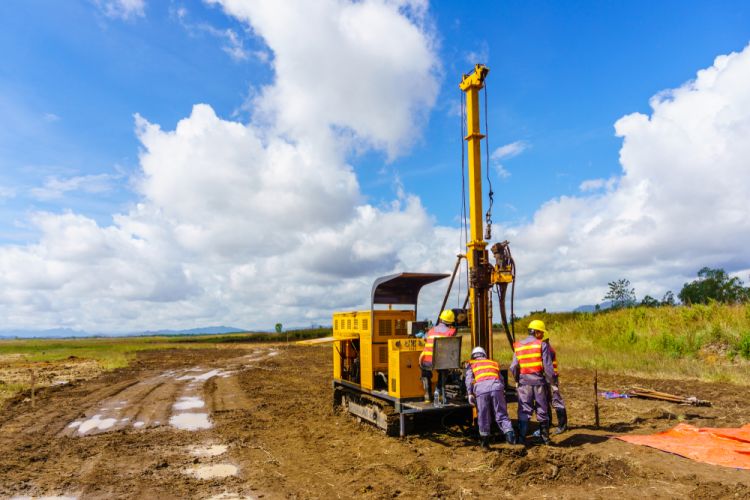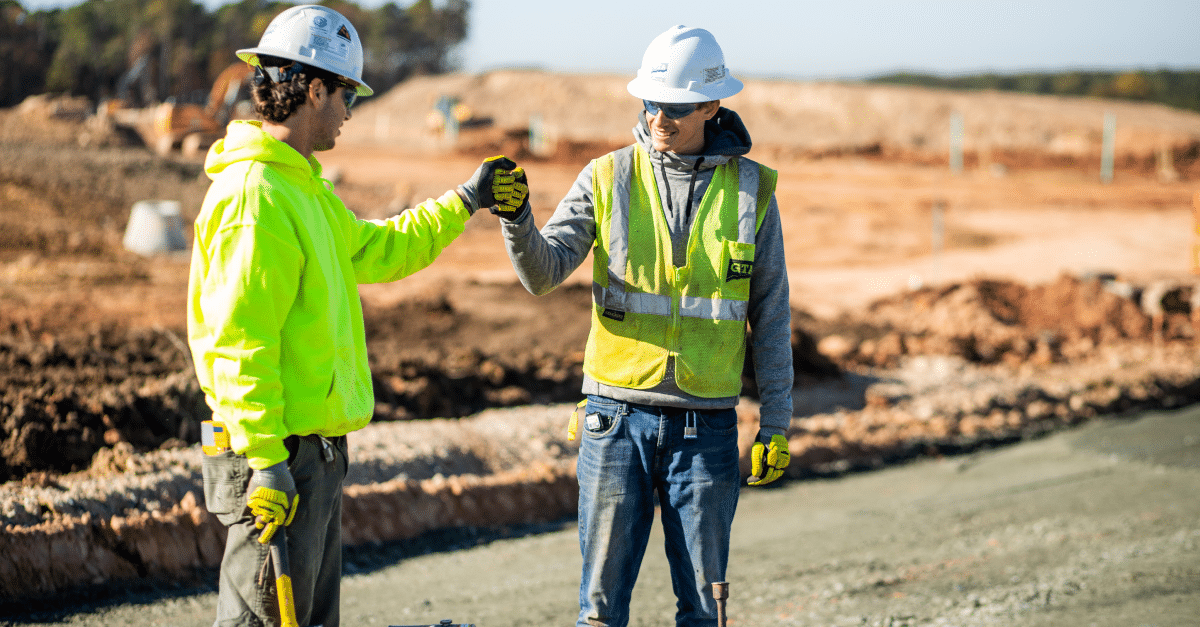Top Guidelines Of Geotechnical Engineering For Construction Projects
Top Guidelines Of Geotechnical Engineering For Construction Projects
Blog Article
Some Ideas on Geotechnical Engineering For Construction Projects You Should Know
Table of ContentsNot known Incorrect Statements About Geotechnical Engineering For Construction Projects Geotechnical Engineering For Construction Projects Can Be Fun For EveryoneThe Buzz on Geotechnical Engineering For Construction ProjectsThe 10-Minute Rule for Geotechnical Engineering For Construction ProjectsThe Main Principles Of Geotechnical Engineering For Construction Projects Top Guidelines Of Geotechnical Engineering For Construction ProjectsGeotechnical Engineering For Construction Projects - An OverviewTop Guidelines Of Geotechnical Engineering For Construction Projects
Accompanying this increased intricacy comes geological and ecological aspects that impact the design of the foundation, which is arguably one of the most essential component of any type of development. People require to trust that buildings, bridges, and roads will certainly stand the test of time. A Geotechnical engineer suggests on how a structure can best be sustained providing its special scenarios What's hidden listed below the surface of the ground is most likely the most essential item of info that a Geotechnical Designer desires.These examples are then examined by the laboratory to determine dirt make-up (Geotechnical Engineering for Construction Projects). The breakdown of sand, silt, clay, and various other products present in the dirt, aids the engineer determine what one-of-a-kind features the site has and what the effects of those may be. Certainly soil make-up is just one examination that can be performed on samples
The 8-Minute Rule for Geotechnical Engineering For Construction Projects
Based upon these examinations, there might be more dirt borings that are drilled, or the engineer might have sufficient details from the initial examinations to make a recommendation to the client on exactly how ideal to proceed with their project. Outcomes are typically reported via borings logs which reveal the soil structure and features at a range of midsts.
Geotechnical designers are liable for comprehending the homes of natural deposits and utilizing this knowledge to establish secure, affordable layouts for construction projects. It is a vital part of any kind of civil engineering project, as it is made use of to establish the viability of a site for building and to guarantee the structure's security.
This includes executing laboratory examinations on the samples and using geophysical methods such as seismic refraction and electric resistivity studies. This information is used to evaluate the site's viability for building and to determine the kind of foundation that ought to be used. Geotechnical engineering assesses dirt conditions, recognizes prospective risks, chooses a suitable structure system for the recommended structure, and identifies the most effective structure design for a provided task.
5 Simple Techniques For Geotechnical Engineering For Construction Projects
The framework might come to be unstable or collapse without proper soil stabilisation, bring about pricey repairs and potential injury. The stablizing procedure entails utilizing various methods to enhance the security of the soil, such as compaction, grouting, and the enhancement of strengthening materials. Without dirt stabilization, the threats connected with building and construction jobs would be much greater, and the outcomes much less trusted.
It is a procedure made use of to improve the properties of dirts. Geotechnical designers conduct site investigations to evaluate the soil's buildings and determine possible risks. They likewise develop structures and other frameworks that require to be constructed on the website, thinking about the soil's attributes. They create and carry out soil stablizing approaches, such as including concrete, lime, or other maintaining agents, to enhance the dirt's stamina and stability.
8 Easy Facts About Geotechnical Engineering For Construction Projects Shown
Geotechnical designers are important in assisting to make sure that dirt stablizing is done properly to make sure that the framework is safe and safe and secure. Geotechnical design is also used to examine dirt problems and identify prospective dangers. This includes right here examining potential flooding, landslides, and other natural calamities that could impact the foundation.
Geotechnical designers utilize this knowledge to execute website investigations, soil, and rock screening, and to analyze the outcomes to establish the suitable style criteria for a task. This information is utilized to make sure that the structure, retaining wall surfaces, inclines, and other frameworks improved or within the subsurface products have adequate stability and resistance to external lots, such as earthquakes, wind, and water.
These frameworks need a deep understanding of the behavior of the subsurface products, in addition to the capacity to take care of the impact of excavation and building and construction on the surrounding environment. Geotechnical engineers use their experience to determine the suitable style parameters for these structures, such as the dimension and form of the tunnel, the toughness of the supporting rock, and redirected here the kind and quantity of assistance called for.
In addition to the design and building and construction of frameworks, geotechnical engineering also plays a vital function in the rehabilitation and maintenance of existing frameworks. As frameworks age, they may experience destruction or other issues that affect their security and efficiency. Geotechnical designers use their proficiency to evaluate the problem of these frameworks, recognize the sources of the issues, and develop techniques to address them.
An Unbiased View of Geotechnical Engineering For Construction Projects
In this short article, I will certainly discuss the role of geotechnical design and the kinds of issues geotechnical engineers address. Geotechnical designers (geotechs) are involved in virtually every sort of civil look at this site design task. Every structure is supported by soil or rock unless it is floating, flying, or dropping down.
Geotechs are normally most entailed at the start of a job. Geotechnical Engineering for Construction Projects. Some of the tasks that a geotech may be accountable for are exploring subsurface problems, figuring out required laboratory screening of soil and rock, analyzing the subsurface expedition results, and writing reports that record the website conditions and supply recommendations for structures, fill requirements, incline security, and so on
It is not unusual for geotechnical engineers to focus on just one of the locations detailed above and research that subject their whole occupation. Geotechnical design is a vital aspect of any type of civil design project. No matter how great a structure is built, it will not be terrific for long if the foundation is insufficient.
Facts About Geotechnical Engineering For Construction Projects Uncovered

Sometimes, points that may not seem important end up being essential years later when issues emerge. One last thing to remember: geotechnical engineering is married to geology. Regardless of exactly how terrific your design know-how is, if something vital is missed out on in the geologic characterization at a website, your competence might not save you.
He delights in creeping around on any landslide he can discover and investing time fly fishing on the water. I hope you appreciated this week's article by visitor writer Jese Vance. I hope you'll join us.
All About Geotechnical Engineering For Construction Projects

It is vital to recognize the soil problem before making the type and deepness of foundation needed for the structure. In order to understand the subsurface soil condition, a geotechnical investigation is needed.
Geotechnical Engineering For Construction Projects Can Be Fun For Anyone
Once the test results come, the Geotechnical Designer evaluations the report, which outlines the dirt and rock properties groundwater condition and the connected risks. The sort of structure needed to develop the structure is then established. Based upon the recommendation of the Geotechnical Designer, the architectural engineer after that creates the framework.
Report this page